Michael Phelps and His (Fake) Shark Friends Make a Splash for Discovery
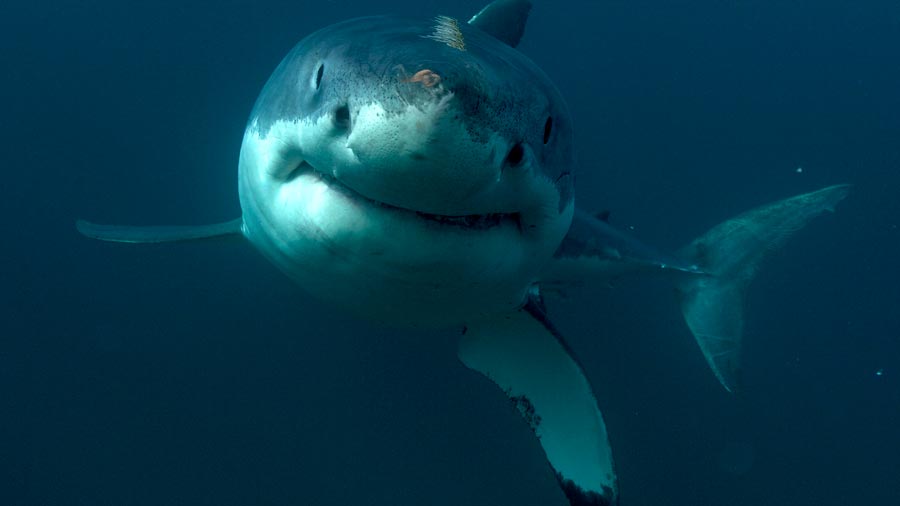
Each summer Discovery lures distracted TV viewers back to their living rooms (and/or mobile devices) for the weeklong oceanfest known as Shark Week—a celebration of sea beasts that has become a bona fide pop-culture phenomenon.
B&C partnered with Canvs, the emotion analytics company, to dive into the top viewer emotions around Shark Week so far. We also worked with iSpot.tv for insight into the advertisers backing the specials (more on that in a moment).
Overall, there have been a total of 61,466 Emotional Reactions (ERs) for Discovery programming so far since Shark Week’s start on Sunday, which is an increase over last year’s 45,990 ERs for the same time period. The network brought out the big guns (or, uh, flippers) to kick off the week with a heavily promoted and much anticipated “race” between Olympic medalist Michael Phelps and various types of sharks. Phelps vs. Shark: Great Gold vs. Great White received 24,919 ERs.
While viewers predomentaily expressed love (27.1%) and excitement (15.2%) about the event, some decided it was boring (9.6%) given that it turned out Phelps didn’t swim next to any real sharks (due to obvious logistical and safety factors, the producers used CGI to simulate the sharks racing next to him) — a “reveal” that’s become a major social media obsession.

Love Michael Phelps but I'm so Team Shark right now. #SharkWeek
— Ben Rajadurai (@brajadurai) July 24, 2017
@sharkweek2017 LOVED the Michael Phelps segment! Great science!
The smarter way to stay on top of broadcasting and cable industry. Sign up below
— nhnonna (@nhnonna) July 24, 2017
Michael Phelps vs shark race is not interesting.Let's see how quickly he can swim AWAY from the shark
— anastasia (@sf_anastasia) July 24, 2017
People are pissed that Michael Phelps didn't actually race a shark https://t.co/Xb6LL2DMbopic.twitter.com/9inlJdLFww
— BuzzFeed (@BuzzFeed) July 24, 2017
Shark Week is also a big draw for advertisers: According to iSpot, 315 brands have spent an estimated $16.9 million airing 598 spots over 3,500 times since Sunday, with a resulting 1.9 billion TV ad impressions. It’s worth noting that multiple brands (including Volkswagen, GEICO and Redd’s Apple Ale) are repeat top advertisers year after year, with VW leading the way since 2015.
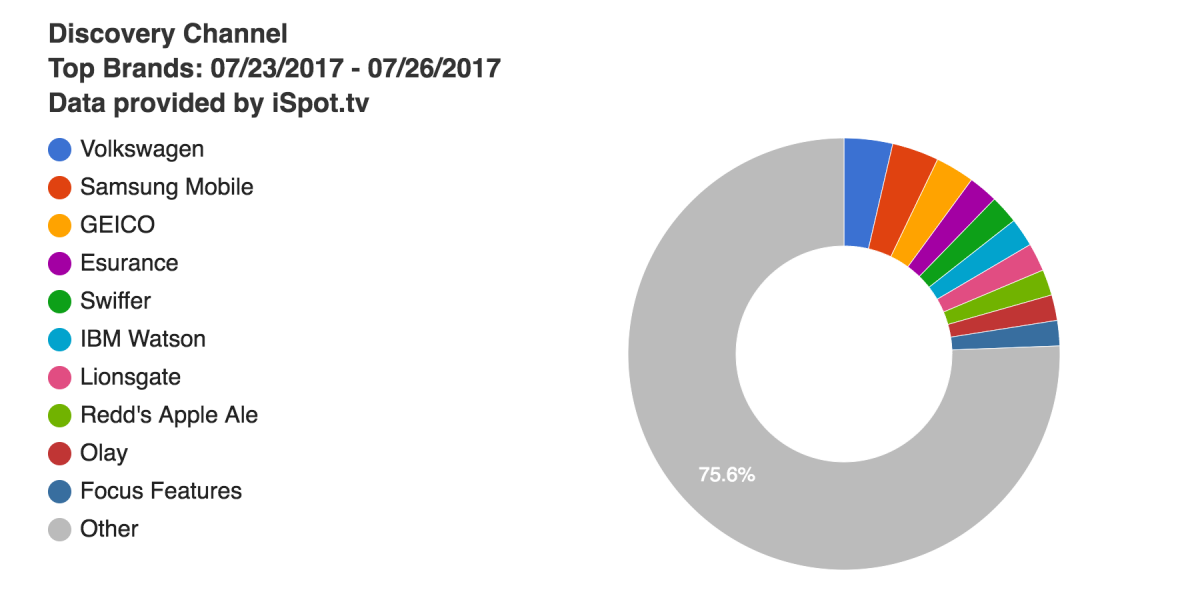

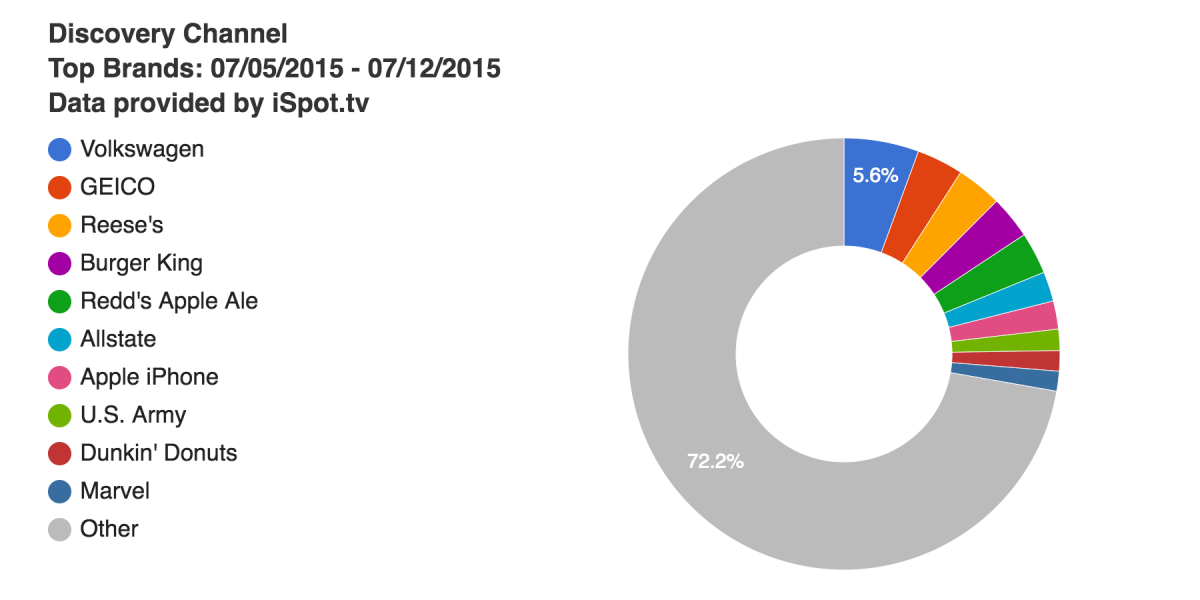
Also worth noting: Viewer attention during Shark Week advertising is actually trending up a bit for Discovery year-over-year: In 2016, the average ad view rate was 89.72%, while this year, so far, it’s 91.41%. (View rate is the percentage of an ad that, on average, was viewed across all airings of that ad.) That number is likely to shift once this year’s Shark Week wraps up, so stay tuned.
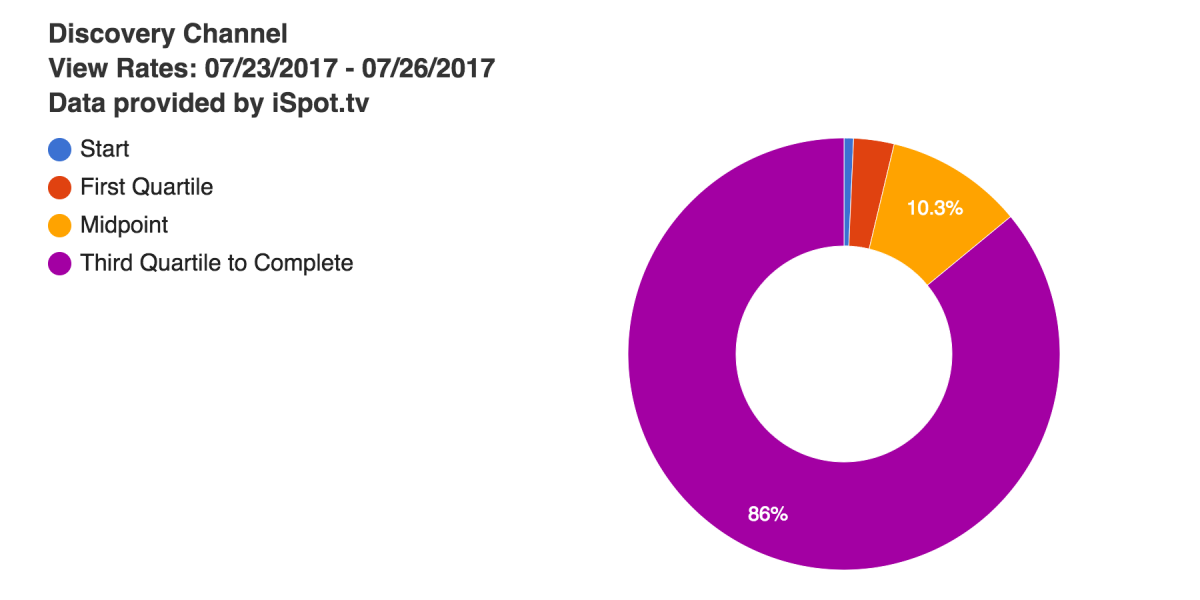
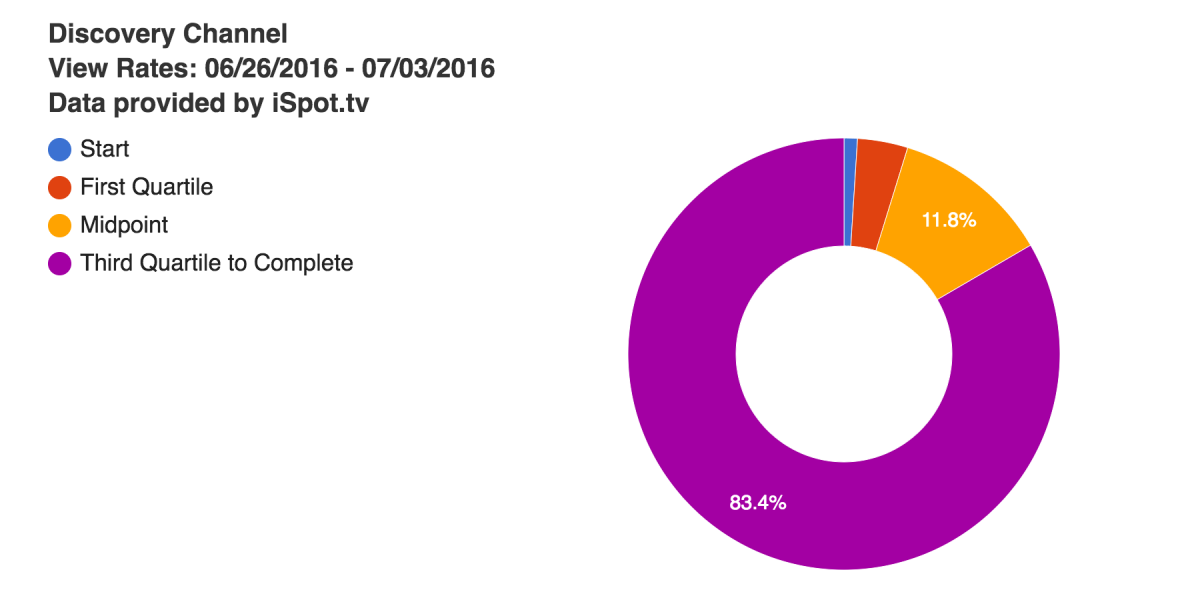
The Shark Week viewer demographic this year so far looks a lot like last year’s, with the largest chunk of viewers being 35-54 years old and predominately male.


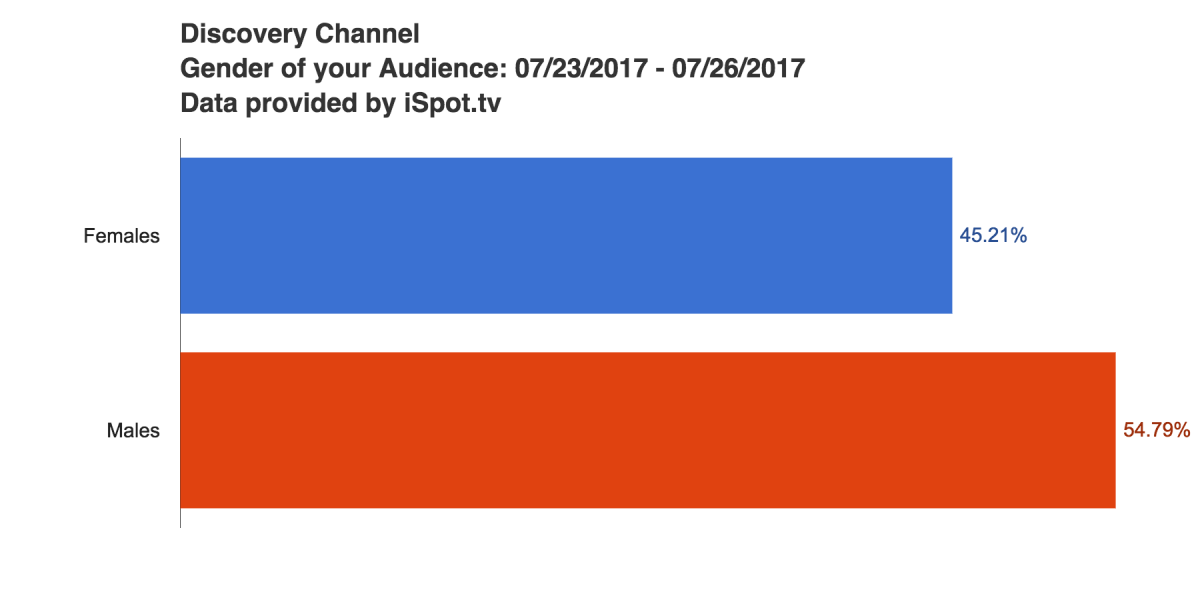
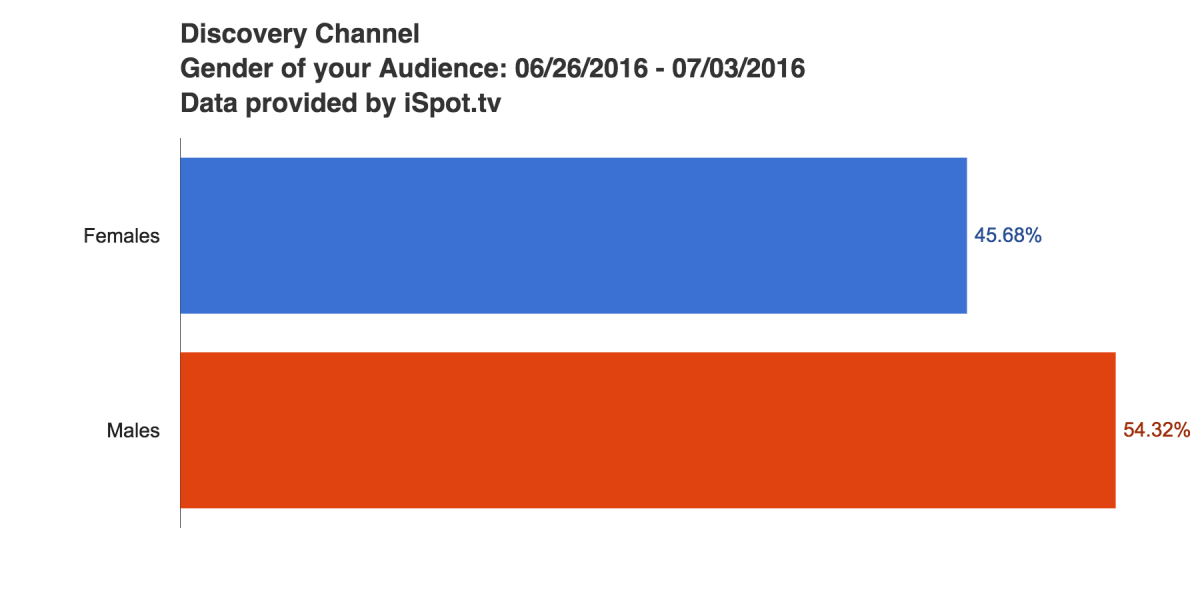
During the summer months when TV viewership tends to be fractured, it’s no surprise that advertisers have sunk their teeth into a week of reliable programming like Shark Week—and continue to hang on year after year.
iSpot.tv is the real-time TV ad measurement company with attention and conversion analytics from 10 million smart TVs.
Eleanor Semeraro is an analyst and contributor with TV [R]EV.
